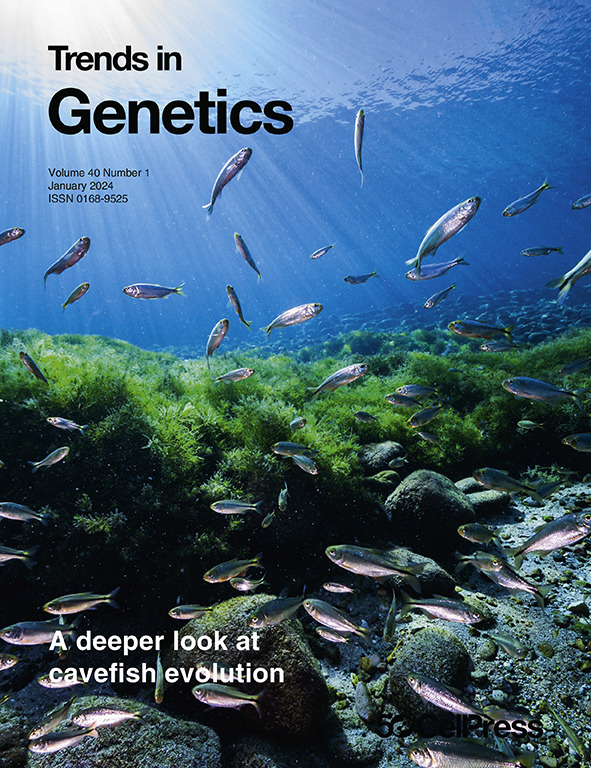Advancing methods for multi-ancestry genomics.
IF 16.3
2区 生物学
Q1 GENETICS & HEREDITY
引用次数: 0
Abstract
Genomics research has historically been biased toward individuals of European ancestry, which has the potential to exacerbate health inequities (Martin, A.R. et al. Clinical use of current polygenic risk scores may exacerbate health disparities). To reduce these disparities, current efforts in human genetics emphasize the inclusion of diverse populations (All of Us Research Program Investigators, The 'All of Us' Research Program). Here, we highlight recent preprints that focus on the intricacies of researching participants with multiple genetic ancestries.
多祖先基因组学方法的发展。
基因组学研究历来偏重于欧洲血统的个体,这有可能加剧健康不平等(Martin, A.R.等)。目前临床使用的多基因风险评分可能会加剧健康差异)。为了减少这些差异,目前人类遗传学的努力强调包括不同的人群(我们所有的研究计划调查员,“我们所有的研究计划”)。在这里,我们重点介绍了最近的预印本,这些预印本关注的是具有多重遗传祖先的研究参与者的复杂性。
本文章由计算机程序翻译,如有差异,请以英文原文为准。
求助全文
约1分钟内获得全文
求助全文
来源期刊

Trends in Genetics
生物-遗传学
CiteScore
20.90
自引率
0.90%
发文量
160
审稿时长
6-12 weeks
期刊介绍:
Launched in 1985, Trends in Genetics swiftly established itself as a "must-read" for geneticists, offering concise, accessible articles covering a spectrum of topics from developmental biology to evolution. This reputation endures, making TiG a cherished resource in the genetic research community. While evolving with the field, the journal now embraces new areas like genomics, epigenetics, and computational genetics, alongside its continued coverage of traditional subjects such as transcriptional regulation, population genetics, and chromosome biology.
Despite expanding its scope, the core objective of TiG remains steadfast: to furnish researchers and students with high-quality, innovative reviews, commentaries, and discussions, fostering an appreciation for advances in genetic research. Each issue of TiG presents lively and up-to-date Reviews and Opinions, alongside shorter articles like Science & Society and Spotlight pieces. Invited from leading researchers, Reviews objectively chronicle recent developments, Opinions provide a forum for debate and hypothesis, and shorter articles explore the intersection of genetics with science and policy, as well as emerging ideas in the field. All articles undergo rigorous peer-review.
 求助内容:
求助内容: 应助结果提醒方式:
应助结果提醒方式:


